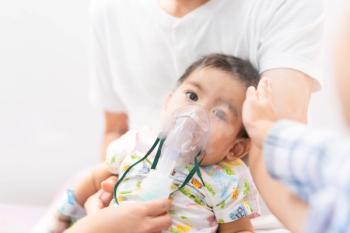
Is COVID-19 impacting minority children more heavily?
Overall, COVID-19 is disproportionately impacting minority populations in the United States. A report examines if this holds true in the pediatric population.
As the COVID-19 pandemic has progressed in the United States, it has become increasingly apparent that minority populations are more heavily impacted than their White peers by the disease. A
The researchers ran a cross-section study of children who tested for COVID-19 at a drive-through that was exclusively for pediatric patients. The drive-through tested both patients in vehicles and patients who walked up to the clinic. The clinic was within 1 mile of a hospital in an outdoor enclosed parking lot. It offered testing 2 to 3 times a week between 10 am and 2 pm. Testing times also included some weekends. The site could not provide any medical management and ill-appearing patients were immediately told to go to the hospital before receiving a test. The tested patients received the test between March 21, 2020, and April 28, 2020.
A total of 1000 children received a COVID-19 test at the testing drive-through. Among these children, 20.7% tested positive for COVID-19. When compared with non-Hispanic white children (7.3%), minority children were found to have higher infection rates (non-Hispanic Black: 30.0%, adjusted odds ratio [aOR] 2.3 [95% CI 1.2–4.4]; Hispanic: 46.4%, aOR 6.3 [95% CI 3.3–11.9]). When looking at income, the investigators found that when compared to children who had the highest median family income quartile (8.7%), the rates of infection were higher among children in the other quartiles quartile 3 (23.7%; aOR 2.6 [95% CI 1.4–4.9]), quartile 2 (27.1%; aOR 2.3 [95% CI 1.2–4.3]), and quartile 1 (37.7%; aOR 2.4 [95% CI 1.3–4.6]).
The investigators concluded that at the community-based testing site utilized for the study that children who were parts of racial and/or ethnic minorities as well as socioeconomically disadvantaged carried the highest burden of COVID-19 infection. Researchers stated that finding out and addressing the reasons for these differences could help reduce the disparities as well as reduce the spread of infection.
Reference
1. Goyal M, Simpson J, Boyle M et al. Racial and/or ethnic and socioeconomic disparities of SARS-CoV-2 infection among children. Pediatrics. 2020;146(4):e2020009951. doi:10.1542/peds.2020-009951
Newsletter
Access practical, evidence-based guidance to support better care for our youngest patients. Join our email list for the latest clinical updates.










